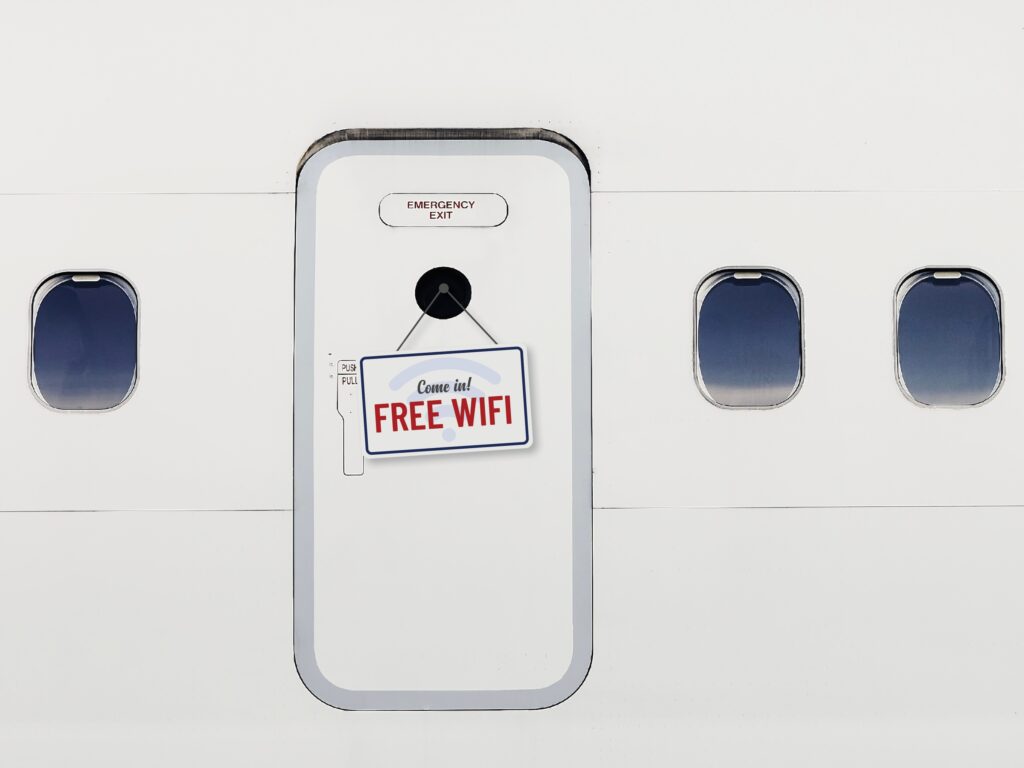
Free Wi-Fi is commonplace in hotels and restaurants but has been slow to take off among airlines, bar a small number of pioneering carriers. Will Delta Air Lines’ decision to provide complimentary IFC accelerate the move to a free Wi-Fi model in the aviation industry? (Photo: Via Satellite)
Delta Air Lines threw down the gauntlet to other air transport operators when it said in January that it would roll out free in-flight Wi-Fi across its fleet, becoming the first major U.S. network carrier to do so.
The move to free in-flight connectivity (IFC) has been long anticipated but slow to materialize, largely because of the high cost of installing and running the systems on aircraft. While some airlines such as JetBlue Airways have offered free Wi-Fi for years, the trend has yet to catch on in a meaningful way.
Delta’s move is expected to catalyze growth in the number of airlines offering some form of free Wi-Fi to passengers. However, industry experts do not anticipate a stampede to an all-free model. Rather, the amount of bandwidth an airline gives away for free, and to whom, will very much depend on its individual business model, branding, and budget.
“Delta and others have been querying the industry on how to make [free Wi-Fi] work for some time, and we’ve been expecting this model to shift faster than it really has,” says Steve Hadden, vice president of Services and Connectivity at Honeywell Aerospace.
Don Buchman, vice president and general manager of Commercial Aviation at Viasat—Delta’s chosen satellite-based Wi-Fi provider for its move to a free IFC model—agrees the shift has taken more time than anticipated.
“The market took a little bit longer to evolve, but I’m not surprised by Delta’s decision,” says Buchman. “I think the rest of the industry is moving now, and you’re already seeing a lot of different models starting to emerge.”
Delta’s free Wi-Fi is tied to its loyalty program, with complimentary access provided to existing SkyMiles customers and to passengers who join SkyMiles on the ground or in the air. Delta is also working in partnership with sponsor T-Mobile, which already provided free in-flight Wi-Fi access to some of its customers on connected flights operated by Delta, American Airlines, Alaska Airlines, and United Airlines.
JetBlue Airways—another Viasat customer that has offered free in-flight Wi-Fi for a decade—does not tie free access to its loyalty program, instead striking a partnership with Amazon. Meanwhile, Scandinavian carrier SAS provides free Wi-Fi to its premium passengers but charges a fee for economy-class customers.
“Others are doing limited [free Wi-Fi]. So American is doing a limited 15–30 minutes free, watch this sponsored ad and then it’s paid after that,” says Buchman. “Others have been doing free messaging or free social. You can really slice it and dice it however you want and for whatever your brand is trying to do.”
He adds: “We’ve been betting on high demand, and high demand means you have to get the engagement up beyond the 5 to 10 percent that are willing to pay. That’s our whole market thesis—we think high demand is going to be there, [so] we invest in supporting that demand. If you have high engagement you have to have enough bandwidth in the right spots to support it, because if you drive high demand and you run out of bandwidth, that’s a fail case.”
Delta began offering free Wi-Fi on more than 500 domestic aircraft on February 1, and aims to offer the service on more than 700 Viasat-equipped aircraft by the end of this year. It also plans to bring free Wi-Fi to its international and regional aircraft by the end of 2024. The carrier’s regional jets are currently equipped with Intelsat’s air-to-ground IFC service (formerly Gogo’s solution before Intelsat acquired Gogo’s commercial aviation business in December 2020). Its international fleet carries Intelsat’s Ku-band satellite system.
Delta has not disclosed which system will power the free Wi-Fi on its regional or international aircraft, although Buchman says Viasat’s “intention is to go on their international fleet.”
This is a selection from an article published by Via Satellite, a sister publication of Avionics International. Author Kerry Reals is a U.K.-based freelance journalist specializing in aviation and aerospace. The original version of the article has been edited here. Read the full version at Via Satellite here >>